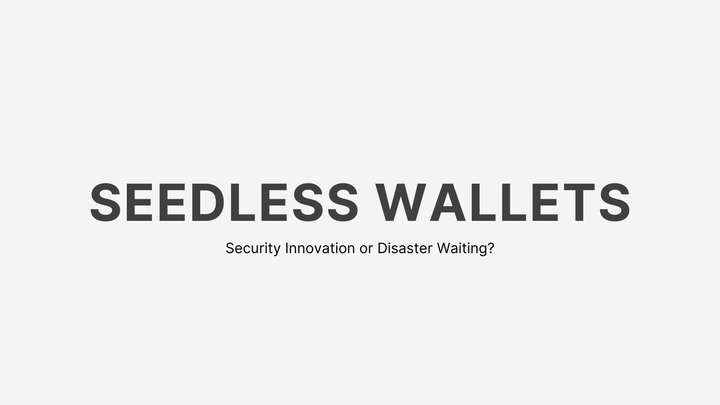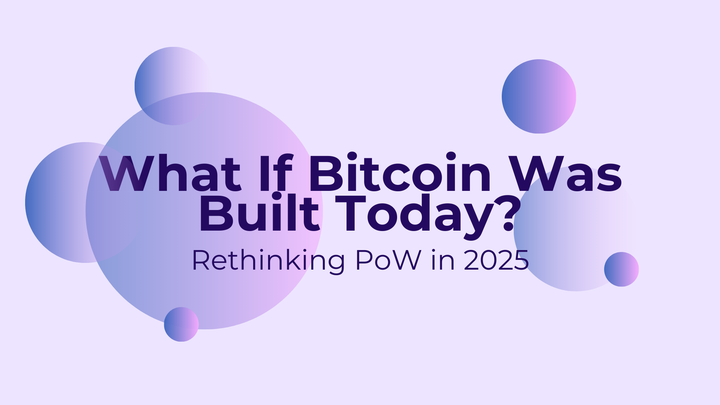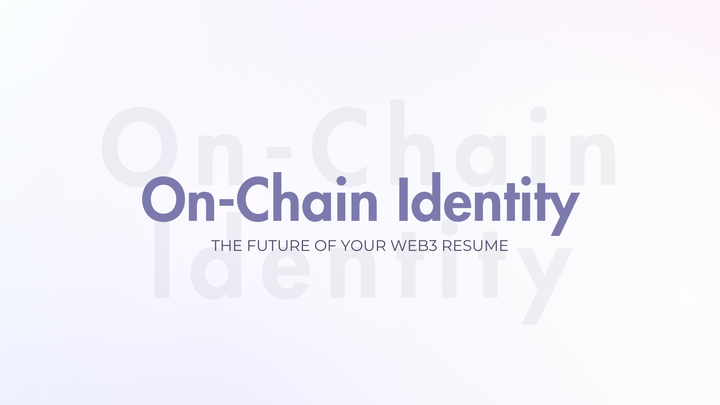How DAOs Are Transforming Education: 2025 Case Studies

Introduction:
Traditional education is ripe for disruption. In 2025, a new wave of projects is reimagining learning through the lens of Web3 – using Decentralized Autonomous Organizations (DAOs) to empower students and educators in unprecedented ways. Forget the old top-down school model: these initiatives see learners as community members who learn, contribute, and even earn in a shared ecosystem. This article explores how decentralized universities are taking shape, how the role of a student is evolving in a DAO-based model, and highlights case studies like Mitosis, TalentLayer, and EduDAO that are leading this transformation.
Decentralized Universities: DAO-Governed Learning Communities
Imagine a university with no central administration deciding the curriculum or policies. Instead, the students, teachers, and stakeholders collectively hold the reins through tokenized voting power and transparent governance – that’s the essence of a decentralized university. In a DAO-governed learning community, decisions about courses, budgets, and community rules are made through proposals that members vote on, typically using a governance token or reputation system. This flips the script on education: those who are part of the learning process have a direct say in shaping it.
In practical terms, a decentralized university might operate via a blockchain-based platform where each participant’s contributions are recorded and recognized. For example, rather than a provost deciding to add a Web3 Programming course, any member of the community could propose a new course or workshop. If the idea gains enough support (votes) from token holders (who might include students, alumni, and instructors), funds from a communal treasury (supplied perhaps by tuition tokens or endowments) can be allocated to develop and run that course. This creates a more agile and democratic educational environment – the offerings evolve based on learners’ needs and interests, not just top-down mandates. Governance rules encoded in smart contracts ensure that no single entity can unilaterally change important policies; everything is transparent and by consensus.
One early example is the concept of “decentralized science” (DeSci) and learning DAOs in the research space, where researchers form DAO collectives to fund and publish studies. Similarly, for broader education, we see prototypes of community-driven academies. These organizations treat education as a public good: anyone can join, the materials are open-source, and improvements come from the community. Importantly, teachers in a DAO university are often peers or advanced students rather than strictly hierarchical professors. Peer-to-peer learning thrives, with learners teaching each other under a collective incentive structure. The result is a more engaging learning community – closer to how open-source software communities operate, but applied to knowledge and skills. By giving every participant stake (both figuratively and literally via tokens) in the success of the school, decentralized universities hope to foster higher motivation, faster iteration in course content, and inclusivity across borders. No expensive campus or bureaucracy needed – just an internet connection, a wallet, and the willingness to collaborate.
Learn → Contribute → Earn: Shifting the Role of the Student
In the traditional model, students are consumers of education: they pay tuition, attend classes, and receive a credential. In the emerging Web3 education (often dubbed “Ed3”) model, students are also contributors and stakeholders. The mantra “Learn → Contribute → Earn” captures this shift. Here’s how it breaks down:
- Learn: Students still take courses or engage with learning materials, but these are often self-paced, modular, or project-based. Learning might involve solving real-world problems or building projects (for instance, creating a small dApp in a blockchain course).
- Contribute: As they learn, students are encouraged (or even required) to contribute back to the community. This could mean improving course content (writing a summary, translating materials into another language), mentoring newer students, or helping to govern the platform (like moderating forums or voting on proposals). Their learning journey is not in isolation; it’s entwined with community participation.
- Earn: Unlike traditional students who typically don’t earn until after graduation, DAO learners can earn rewards during the process. Contributions can be rewarded with tokens, badges, or other on-chain credentials. For example, a student who authors a high-quality tutorial might earn the academy’s native token, which could confer governance power or even market value. A student who finds and fixes errors in course content might receive a bounty. Over time, active students accumulate a portfolio of verifiable achievements and possibly income, even as they study.
This model effectively blurs the line between “student” and “staff” and even “owner.” A learner in a DAO is a bit of all three. They have agency to shape what they’re learning (suggesting new topics), responsibility in the community (helping it grow and stay organized), and upside from success (if the platform’s token value rises or if their reputation leads to job offers). It treats education not as a service one buys, but as a collaborative endeavor where everyone’s input makes the whole system richer. The role of teachers also changes – often they are facilitators or senior contributors rather than authoritarian figures. They might still lead lectures or create content, but students might vote them into that position or rate their effectiveness in a transparent way.
One concrete example of “learn and earn” is the concept of bounties for learning tasks. A platform might have a list of tasks like “summarize this research paper” or “create a set of study flashcards for chapter 3.” Students can claim these tasks, do them as part of their study process, and get token rewards upon completion and community review. Another example: after completing a course module, instead of a traditional test, students might have to contribute a real improvement to the project (like contributing to an open-source project if it’s a coding course) – success is measured by community acceptance of their contribution, which also earns them a credential on their profile (like a non-fungible token certificate). This way, a student’s learning path generates tangible outputs and proof-of-work that can be shown to future employers or used to unlock advanced learning opportunities. It’s a virtuous cycle: learning drives contribution, contribution reinforces learning, and both can drive earning or recognition. The student becomes an active participant in knowledge creation and not just a recipient.
DAO Platforms in Action: Mitosis, TalentLayer, and EduDAO
Several pioneering platforms are embodying these principles, demonstrating how DAOs can transform education in practice:
- Mitosis (Mitosis University): Mitosis is an example of a project that integrates an educational hub into its decentralized ecosystem. Mitosis itself is a DeFi protocol with a strong community governance model (a true DAO from day one). Alongside its financial platform, it has launched Mitosis University, a content hub where community members can learn about blockchain, DeFi, and the Mitosis ecosystem. What’s special is that the content on Mitosis University isn’t just top-down – it’s community-driven. Contributors (who could be experienced community members or even enthusiastic learners who research a topic) write articles, tutorials, and research pieces. These contributions are reviewed and then published in multiple languages (indeed, the platform supports translations into numerous languages, often done by volunteers in the community). Contributors are often rewarded with recognition and possibly governance tokens for significant work. This means learners on Mitosis University can transition into teachers/contributors as they gain expertise. The DAO governance of Mitosis also means that if the community decides certain educational initiatives are needed – say funding a series of webinars or creating an interactive course – they can propose it and allocate treasury funds. Essentially, Mitosis is building a decentralized educational ecosystem around its protocol, ensuring users not only use the platform but also continuously learn and shape it. Students of Mitosis University know that mastering the content could lead to roles in the community (like becoming an ambassador or moderator) and those roles are rewarded, blurring education with career growth.
- TalentLayer: TalentLayer approaches the education/career dynamic from the angle of on-chain credentials and work opportunities. It’s not a “university” per se, but it’s highly relevant to transforming how skills and learning are valued. TalentLayer is building a decentralized protocol for professional reputation. In the Web3 world, rather than a LinkedIn endorsement or a university degree as proof of skill, TalentLayer allows individuals to carry verifiable, blockchain-based records of their work and learning achievements from platform to platform. How does this transform education? Consider a student who has learned via various DAO projects – perhaps they completed coding bounties on a dev platform, moderated a Discord for a DeFi project, and took part in an EduDAO hackathon. Each of those contributions can be logged on-chain (as NFTs or soulbound tokens indicating completion, feedback scores, etc.). TalentLayer aggregates these into a portable profile. This means that learning-by-doing (often outside a formal degree program) counts toward one’s reputation in a way that any recruiter or project can verify. It essentially validates the “contribute to earn credentials” approach. With TalentLayer, an individual’s contributions in educational DAOs or any collaborative project become part of their resume. This encourages students to engage more deeply: your effort in a learning community isn’t just forgotten in a closed LMS (Learning Management System); it’s building your professional identity. Additionally, some platforms use TalentLayer’s protocol to match learners with mentors or projects, so as you learn you get funneled into real-world gigs (sometimes paid). In summary, TalentLayer supports the Ed3 vision by making community-verified skills as important (or more so) than institutional credentials, thereby incentivizing learners to gain experience through DAO participation.
- EduDAO: EduDAO is a collaborative initiative that directly connects traditional academia with DAO principles. Backed initially by the BitDAO ecosystem, EduDAO is a consortium of leading university groups (from places like UC Berkeley, MIT, Oxford and others) that manage a decentralized treasury for funding educational projects. Each participating university blockchain club or group is allocated a vote or share in governance, and together they decide which research proposals, student startups, or educational efforts receive funding from the DAO’s treasury (which was funded by BitDAO/Mantle with a substantial amount annually). This is transformative in two ways: (1) Students are allocators of funds – instead of just being recipients of scholarships or using school funds, they have collective control over a global fund. They learn real-world grant-making and project evaluation skills in the process. (2) The projects they fund often benefit students broadly – such as organizing hackathons, creating open-source educational materials, or tools for fellow students. EduDAO essentially turns the concept of a university endowment on its head; it’s like a student-governed endowment that transcends any single campus, focusing on blockchain education needs everywhere. Already, EduDAO has enabled things like multi-campus hackathons, funded cutting-edge research into blockchain scalability (with students as research assistants), and created a network where students from different countries collaborate via the DAO. Participants earn not just knowledge but also a reputation for leadership and collaboration that is visible in the DAO’s community. It’s a powerful case study of blending academic institutions with decentralized governance – perhaps foreshadowing how universities might operate in the future, giving more power to students and bridging institutions through common DAO infrastructure.
These three case studies – Mitosis, TalentLayer, and EduDAO – highlight different facets of how DAOs are transforming education:
- Mitosis shows a platform where the educational content and governance are community-driven, giving learners a chance to directly influence and benefit from the ecosystem they are learning about.
- TalentLayer showcases the importance of on-chain credentials and reputation, ensuring that learning through contribution doesn’t go unrecognized, thereby motivating students to engage in meaningful tasks.
- EduDAO exemplifies decentralized funding and governance in a formal education context, proving that students can responsibly manage resources and co-create educational opportunities at scale.
Conclusion:
The year 2025 finds education at a crossroads, with DAO-driven initiatives lighting a path toward a more democratic, practical, and inclusive system. The ethos across these projects is clear: empower the learner. By treating students as contributors and stakeholders, education becomes a living, collaborative process rather than a one-way transmission. Challenges remain, of course. These models must address questions of accreditation (will employers and institutions recognize these new credentials?), quality control (can the crowd maintain high academic standards?), and accessibility (ensuring these opportunities reach underprivileged learners, not just the crypto-savvy). Yet, the early case studies are promising. They demonstrate improved engagement, faster innovation in curriculum, and real-world readiness of participants. As DAOs continue to mature, we may well see the lines blur further – where working for a DAO and studying with a DAO are part of one continuum of lifelong learning and earning. Education is being decentralized, and with it comes the possibility of a future where learning is truly by the people, for the people.



Comments ()